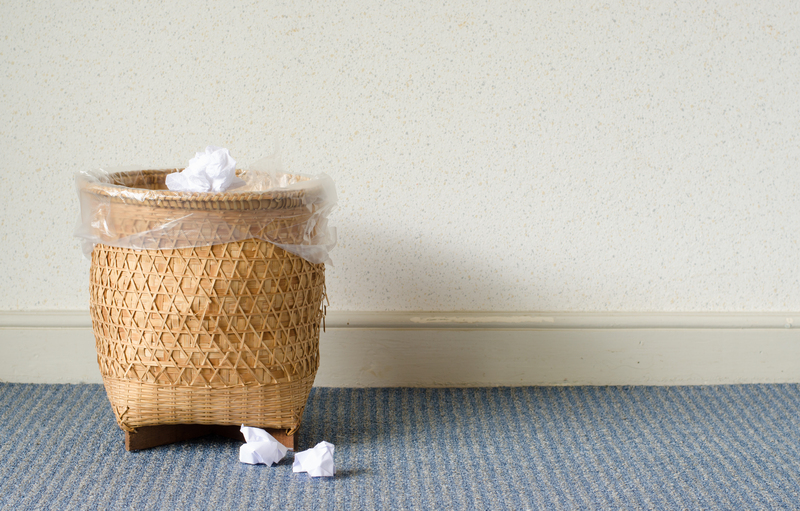Simplifying the Plant Pot Disposal Process: An Expert Guide
Are you staring at a stack of empty plant pots in your garden shed and wondering how to dispose of them responsibly? Millions of gardeners, plant enthusiasts, and homeowners face this problem every year. Disposing of plant pots seems simple, but environmental concerns and local regulations can make the process overwhelming. This in-depth guide demystifies plant pot disposal, outlines eco-friendly options, and ensures you keep your sustainability goals on track--step by step.

Understanding the Challenges of Plant Pot Disposal
Modern gardening and landscaping have made plant pots widely available and seemingly disposable. Their convenience, however, comes with significant challenges:
- Material Complexity: Most plant pots are made from a range of materials--plastic, ceramic, clay, or biodegradable composites--each with unique disposal requirements.
- Environmental Impact: Traditional plastic plant pots contribute to landfill overflow and microplastic pollution when improperly disposed of.
- Recycling Confusion: Local recycling rules can be confusing or inconsistent, making it tough to know exactly what to do with empty pots.
Effective plant pot disposal is crucial for sustainable gardening. Let's dive deeper into practical and responsible ways you can simplify the plant pot disposal process and help the planet.
Comprehensive Methods to Dispose of Plant Pots
1. Reuse and Repurpose Plant Pots
Before considering disposal, reusing and repurposing plant pots is the most sustainable approach. Here's why:
- Cost-Effective: It saves you money on buying new pots each season.
- Reduces Waste: Reduces landfill contribution and extends the lifecycle of materials.
- Encourages Creativity: Broken pots can become artistic garden features or drainage material for larger plants.
Smart ways to reuse plant pots:
- Start seedlings or propagation cuttings for new plants.
- Organize small garden tools or labels for easy access.
- Turn pots into decorative planters by painting or wrapping them in burlap.
- Offer gently-used pots for free to friends, neighbors, or local gardening clubs.
2. Recycling Plant Pots: What You Should Know
Not all plant pots are recyclable, and some require special handling. Here's how to determine if your plastic plant pots or others can be recycled:
- Check for a recycling symbol: Most recyclable pots will have a triangle symbol and a number indicating the plastic type.
- Clean before recycling: Ensure pots are free of soil and plant residue to avoid contaminating recycling batches.
- Consult local guidelines: Some municipalities accept #2 (HDPE) or #5 (PP) plastics commonly used for plant pots in curbside recycling, but many do not.
- Look for specialized drop-offs: Local garden centers or nurseries sometimes host seasonal plant pot recycling programs.
Important: Black plastic pots are often not accepted in standard recycling streams due to the carbon black pigment, which can't be detected by sorting machines. Always check with your local recycling authority to avoid rejection.
3. Composting Biodegradable Pots
Biodegradable plant pots, often made from coir, peat, paper, or bamboo, provide an eco-friendly alternative that can be composted at home. Here's how to handle them:
- If fully organic, break up the pot and add it to your compost pile along with kitchen and garden waste.
- For commercially branded "compostable" pots, check packaging for certification and composting instructions.
- Avoid composting plastic-coated or chemically-treated pots as they won't break down naturally.
Tip: Biodegradable pots can sometimes be planted directly into the ground, where roots grow through as the pot disintegrates.
4. Donating Plant Pots
Donating gently-used pots extends their life and supports community green initiatives:
- Reach out to local community gardens, schools, or nonprofit horticultural projects--they often need extra plant pots for seedlings and seasonal plantings.
- Attach a note offering free pots on community boards or social media platforms like Facebook Marketplace, Freecycle, or Nextdoor.
- Many local garden centers will accept reusable pots to encourage sustainable gardening among patrons.
Step-By-Step Guide: Properly Disposing of Plant Pots
Simplifying plant pot disposal is about following a clear, organized process:
- Sort By Material: Separate plastic, ceramic, clay, and biodegradable pots.
- Check for Recycling Information: Look at the recycling codes and materials list.
- Clean Pots Thoroughly: Rinse off all;
- Soil
- Plant residue
- Chemical traces
- Decide on Reuse, Donate, Recycle, or Compost:
- Reuse or repurpose wherever possible.
- Donate usable pots to community spaces or gardeners.
- Compost biodegradable pots (if safe and suitable).
- Recycle per local regulations.
- As a last resort, dispose of non-recyclable pots with regular waste, ensuring you fully explore other options first to minimize landfill impact.
- Use Local Drop-off Points: If unsure, many municipalities or garden centers accept plant pots for proper recycling or reuse.
Material-Specific Disposal Recommendations
Plastic Plant Pots
- Recyclable Types: HDPE #2 and PP #5 are more commonly accepted. Black plastics often aren't recyclable curbside.
- Special events or collection bins at garden retailers can help you dispose of non-standard plastics responsibly.
Ceramic and Clay Pots
- Often cannot be recycled with standard glass or plastic streams.
- Broken pieces can be used as drainage at the base of new pots or in garden paths.
- Difficult to compost; best reused or donated when possible.
Biodegradable and Compostable Pots
- Can be added to garden compost if made from peat, coir, uncoated paper, or bamboo.
- Check for wax or plastic linings, which may require landfill disposal if not certified compostable.
- Best practice is to confirm compostability and compost in hot, active piles for faster breakdown.
Eco-Friendly Alternatives: Choosing Better Pots for Future Disposal
To reduce future disposal headaches, consider sustainable potting choices:
- Purchase plants in biodegradable containers or refillable pots.
- Support nurseries with active pot return/recycling programs.
- Opt for long-lasting materials like glazed ceramics or thick terracotta that can be reused for years.
- Try seed-starting trays or modules made from natural fibers or post-consumer recycled plastics.
Making eco-conscious purchasing decisions simplifies the disposal process and helps promote a circular gardening economy.

Frequently Asked Questions About Plant Pot Disposal
Can I put plant pots in curbside recycling?
It depends on your local recycling program. Many programs do not accept plant pots due to material types and contamination risks. Always confirm with your waste management provider and look for special drop-off events as needed.
Are black plastic pots recyclable?
Most municipal recycling facilities can't detect black plastic plant pots because the pigment makes them invisible to sorting machines. Seek collection programs at garden centers or reuse them whenever possible.
What do I do with broken ceramic or clay pots?
While broken ceramics and clay can't be recycled in standard programs, they make excellent drainage material in new pots or can be incorporated into garden mosaics and pathways. Avoid sending them directly to landfill if you can repurpose them creatively.
Are biodegradable plant pots truly compostable?
Most are, but always check for coatings or treatments that might compromise compostability. Certified compostable pots generally break down in home compost systems, but commercial composting may be faster for dense materials.
Where can I donate old plant pots?
Check with local schools, community gardens, gardening clubs, or outreach programs. You can also post on online community boards or inquire at local nurseries to see if they collect and redistribute used pots.
Conclusion: Making Plant Pot Disposal Easy, Responsible & Sustainable
Simplifying the plant pot disposal process boils down to knowledge and intention. With the right information, you can:
- Reduce garden waste through creative reuse and repurposing.
- Ensure responsible disposal via recycling or composting.
- Support a sustainable gardening culture by donating or choosing eco-friendly pots in the future.
By following these strategies, you don't just clear out space in your shed--you make a measurable impact on the environment and set an example for others. So next time you wonder what to do with those old pots, remember: responsible plant pot disposal is simple, rewarding, and good for the planet!
Start today--simplify your plant pot disposal process and cultivate a cleaner, greener garden tomorrow!